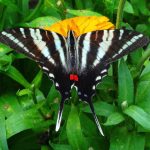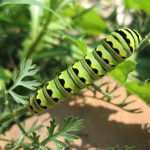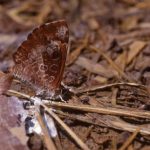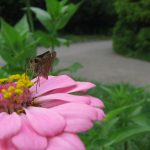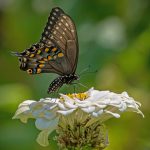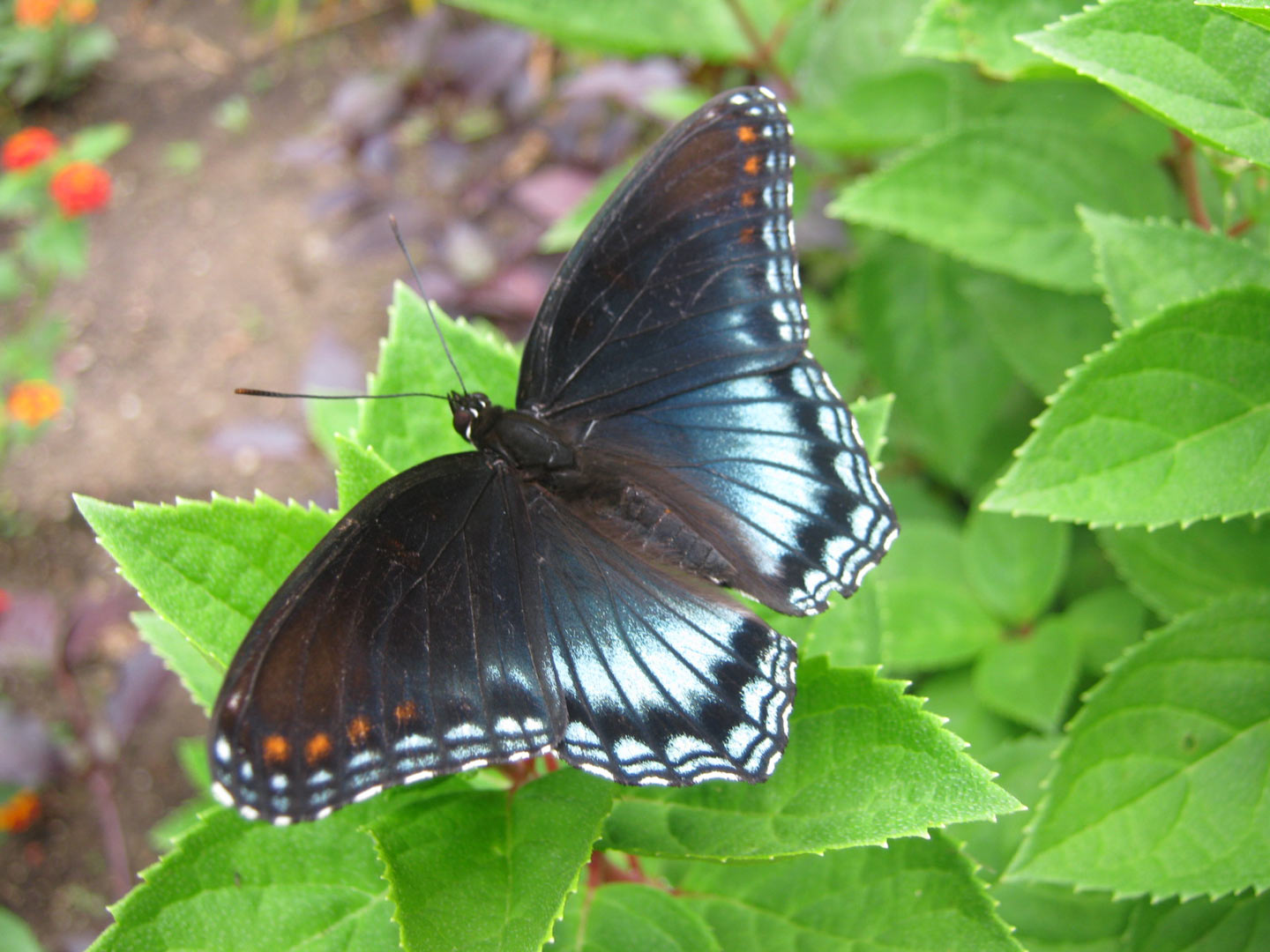
It probably isn’t a surprise that bees and butterflies of all kinds find a home at Inniswood. Our combination of cultivated gardens and natural areas provides opportunities to meet the needs of many lepidoptera species. Every week, April through October, an Inniswood educator sets out on a stroll through the gardens in search of butterflies. We follow a set route past flower beds, prairie gardens and forested areas, and record every butterfly we see within 15 feet of us. With a pad and pencil in hand we start out at Innis House and make our way through the 14 sections of our butterfly monitoring transect.
SECTION 1: Before we get going, we make notes on the weather conditions. Warm, sunny days with minimal wind are best for finding butterflies. If we have rain, if temperatures are below 60 degrees, and if wind speeds are above 18 mph, it means we had better wait for another day. On favorable days, we set off and make our way to the Rose Garden.
SECTION 2: At the Rose Garden we wind our way around the back of the large gray trellis. In summer the clustered blossoms of phlox growing beside the trellis provides butterflies with the landing spots they need to rest and take a drink.
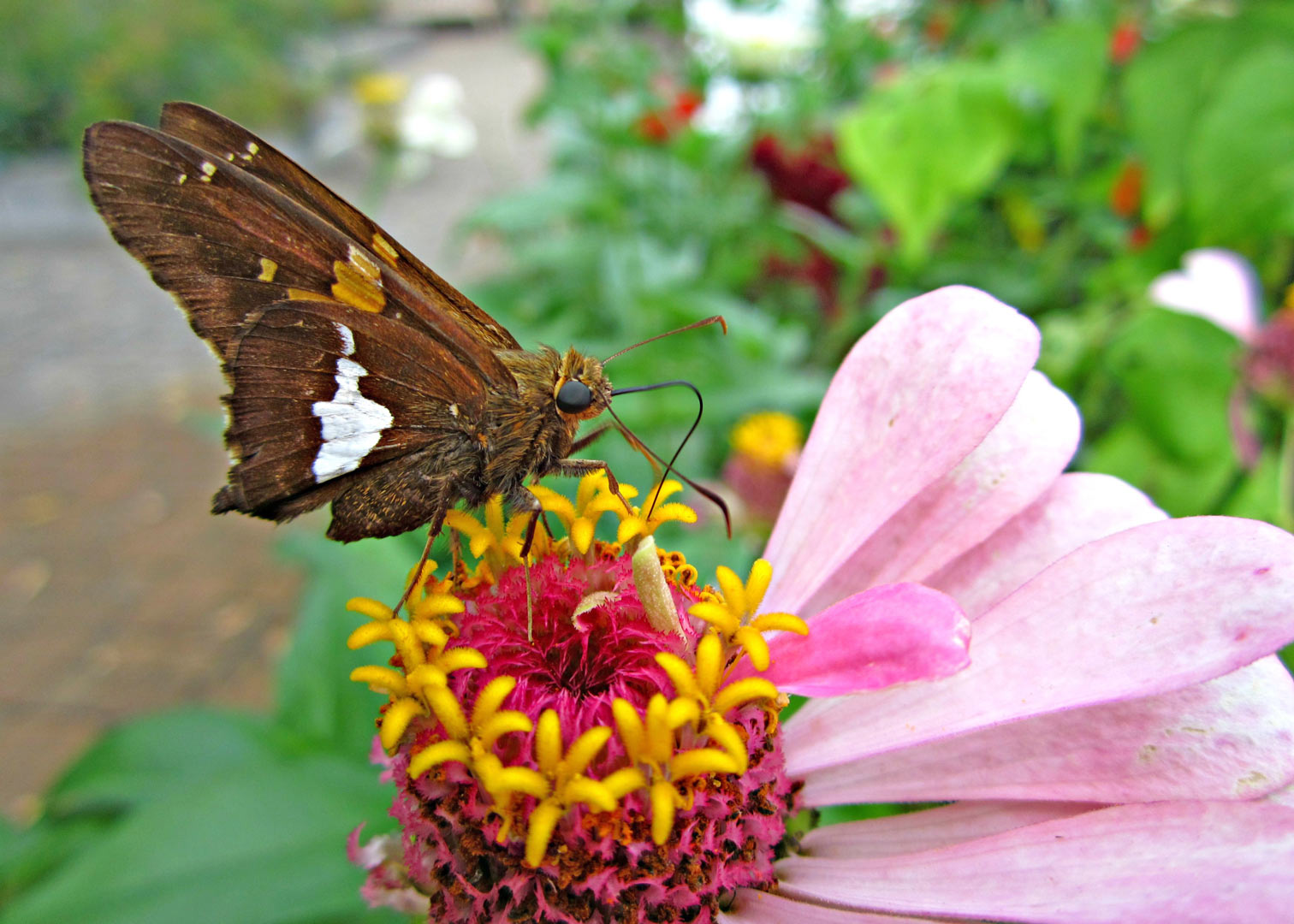
SECTION 3: From the Rose Garden we head for the Gardens Entrance. At least a few skippers, and sometimes larger, hard-to-miss butterflies are often found in this section. The varying bloom times of the perennial flowers that line the fence of the parking lot provide a nectar source throughout the growing season. The southern exposure and radiating heat from the blacktop parking lot ensures flight muscles are warm enough to flutter.
SECTIONS 4 and 5: Through Section 4 we make our way along the lawn on the east side of the parking lot and head onto the Boardwalk Trail, the start of Section 5, which takes us into the forest. While the shade of the forest is not typically the best place to find sun-loving butterflies, it is a good place to find caterpillars. The larval stage of hundreds of lepidoptera species, many of which will develop into moths, feed on the leaves of trees here.
The presence of appropriate host plants for caterpillars to feed on is critical to the habitat of moths and butterflies. Some species feed only on one type of plant during the caterpillar stage. The beautiful zebra swallowtail (Eurytides marcellus) depends on the leaves of the pawpaw tree (Asimina triloba) to feed its growing young. One caterpillar seen at Inniswood prefers to dine on something other than leaves. Harvester butterfly caterpillars (Feniseca tarquinius) are carnivorous. They eat the woolly aphids that feed on the many American Beech trees (Fagus grandifolia) that dot the forest at Inniswood. The harvester adults also depart from the typical butterfly diet, sipping aphid honeydew and tree sap instead of floral nectar.
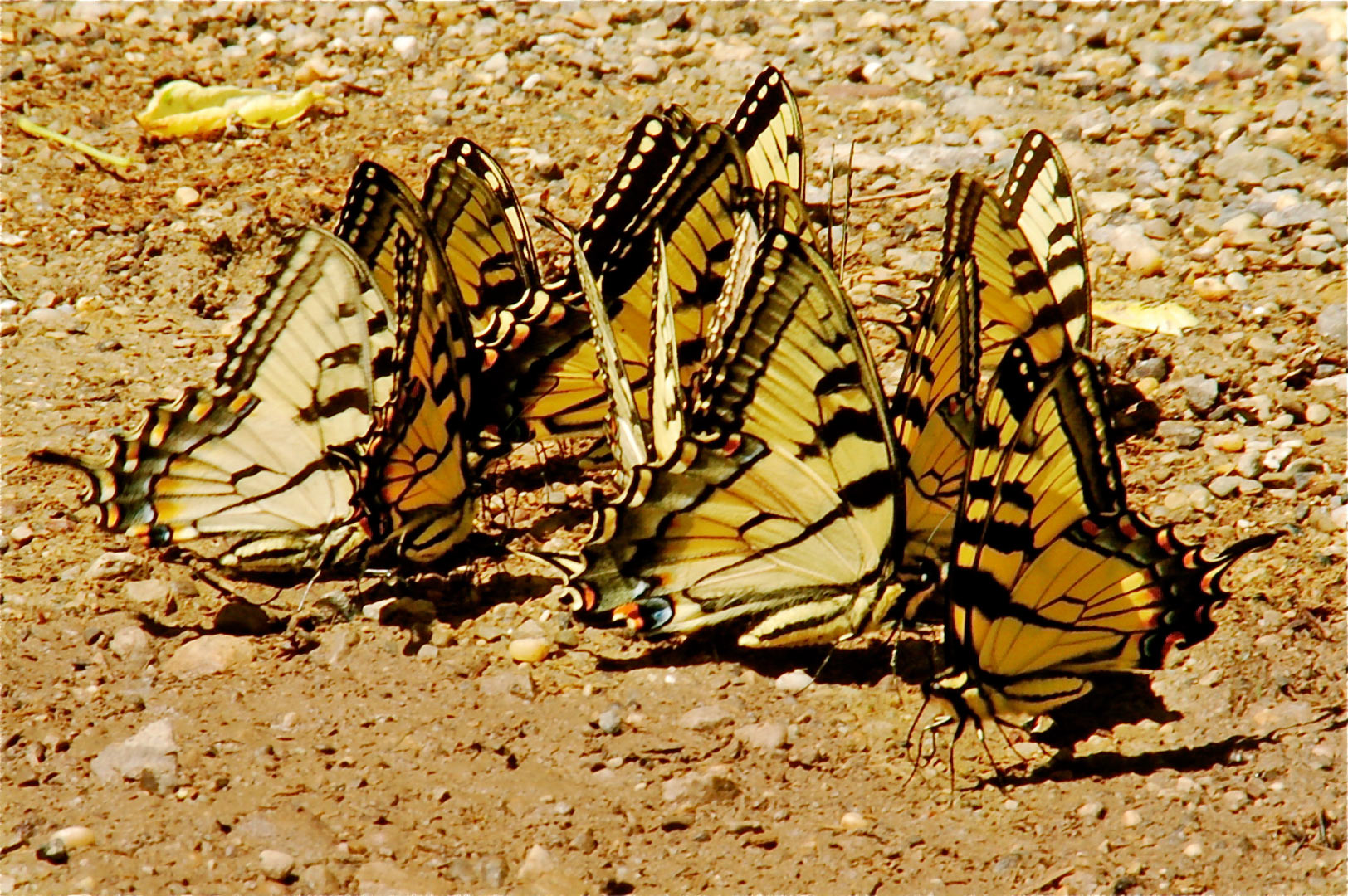
SECTION 6: Out of the woods we make our way onto Frog Talk Walk then wind through the Prairie Garden. Native plants such as milkweed and Joe Pye Weed (Eupatorium maculatum) grow here and provide food for butterflies in summer and fall. Spring brings muddy paths, which are helpful as well. Many butterflies can be found puddling on wet soils to take in needed water and minerals.
SECTION 7: From the Prairie Garden we head across the lawn to the Cutting Garden. As spring bulbs give way to summer annuals this becomes a guaranteed spot to find something aflutter. Flowers are planted here in groupings, which makes them more easily located by butterflies and other pollinators that depend on particular species of plant. Clumps of zinnias offer bright colors and wide landing pads, attracting many butterflies for our list most weeks through summer.
SECTION 8: We head into the Herb Garden and always look for black swallowtail caterpillars (Papilio polyxenes) which find the dill plants as tasty as we do as the season progresses.
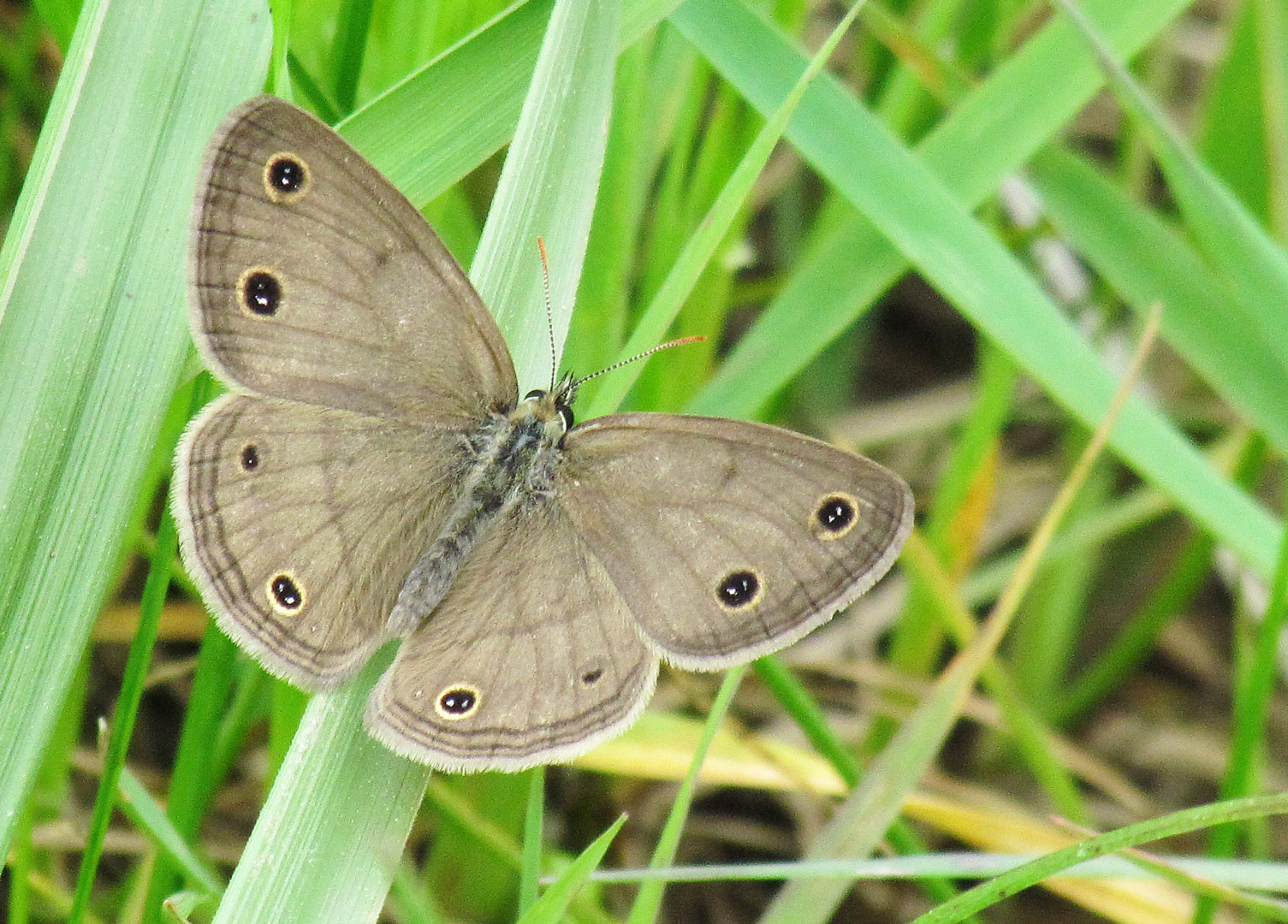
SECTION 9: We make our way past field and forest edge and head onto the Spring Run Trail. The dappled sunlight and mixed vegetation give us the opportunity to search for butterflies such as the little wood satyr (Megisto cymela), a species we might not find elsewhere in the gardens.
SECTIONS 10-14: From Spring Run Trail we head over to the Sisters’ Garden and then up the Brookwood Trail, ending up back at Innis House. Along the way we pass a variety of native and cultivated plants that give rise and fall to butterfly hotspots throughout the monitoring season.
By the time the season ends in October the flowers have disappeared and so have the butterflies. Many of them find winter homes in leaf litter and on plant stems. Others fly off to warmer destinations.
The large stack of pages that detail our findings for the year is sent to be compiled with the state butterfly data. Copies are kept on file at Inniswood. They provide us with insight into how weather and changes in floral offerings impact butterflies, and fuel our anticipation for another year in search of butterflies.
JEN SNYDER
Environmental Educator, Inniswood Metro Gardens
- Zebra swallowtail at Inniswood. (Bob Clark)
- Black swallowtail caterpillar. (Andrea Krava)
- Harvester butterfly. (John Watts)
- A little glasswing at Inniswood. (Jen Snyder)
- Black swallowtail on flower at Inniswood. (John Cagnina)

